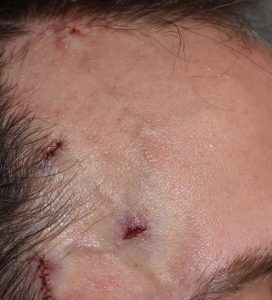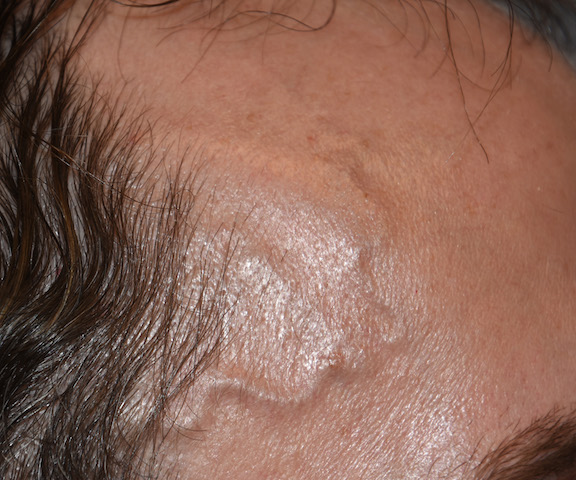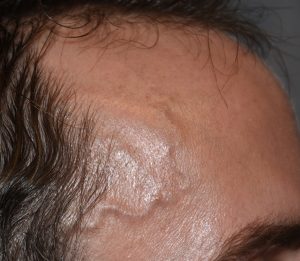One uncommon type of aesthetic forehead deformity is that of prominent temporal arteries. This is where the anterior branch of the superficial temporal artery becomes either partially or fully visible as it exits the front end of the temporal hairline. It has a serpiginous pattern that further branches as it courses into the superolateral aspect of the forehead on its way into the anterior scalp.
It is most frequently seen in males some of whom are thin with little subcutaneous fat. But other men have thicker tissues where it can also occur. The difference is usually the extent of the arterial reveal which is more complete in thinner patients. Such prominent temporal arteries have a classic presentation with variable vessel show that is exacerbated by exercise, sun exposure, hot weather and alcohol consumption. All external factors that are known to cause vessel dilation due to arterial muscle wall relaxation.
The treatment of prominent temporal arteries is a multilevel ligation technique through very small incisions. Simply tying off anterograde blood flow from the main trunk at the exit from the temporal hairline will not work by itself. Retrograde flow must be also cut off to eliminate vessel fill from backflow. As a result it usually takes 3 or 4 ligation points to eliminate pulsatile flow…which is the immediate surgical goal.

The effectiveness of temporal artery ligation is determined at two particular time periods, immediate and months later. During the procedure the goal is to eliminate pulsatile flow and to do as many ligation points as needed to do so around the forehead and temporal region. It is imperative that all signs of active blood flow are eliminated by the end of the procedure. The will always result in an eventual reduction of the visibility of the arterial branches. It is just a question of how complete it will be and will there be any re-emergence of a branch months later due to a feeder vessel not seen during the initial procedure.
Dr. Barry Eppley
Indianapolis, Indiana




